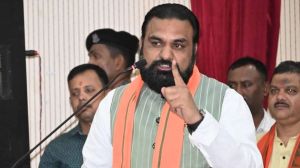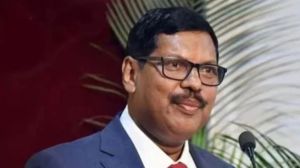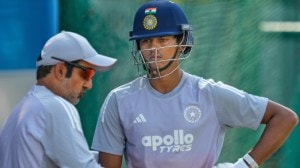No helmets, but Pathans still pitch them short
KABUL, APRIL 6: Mohammad Shafiq Masood dances down the pitch and slams the ball back over the head of Jalalabad strike bowler Jalal Husse...

KABUL, APRIL 6: Mohammad Shafiq Masood dances down the pitch and slams the ball back over the head of Jalalabad strike bowler Jalal Hussein for six.
Shafiq, 21, who bats at number three for Kabul, throws his fist in the air. He says he wants to bat like the Australian and Pakistan greats, former captains Mark Taylor and Imran Khan.
In perhaps the most unlikely of countries — Afghanistan — cricket is booming. Local authorities say there are now more than 150 teams and plans are under way to push Afghan cricketers into the international arena.
Taliban sports minister Abdul Shokour Mutmaen said the 28 provinces now under the militia’s control have initiated a league, each fielding up to 10 teams.
There are seven in Kabul, where an unlikely mix of Islamic zeal and weekend games played in the backyard has recruited Afghan baby boomers to the sport.
Cricket has always been played in Afghanistan, but recent growth was due largely to the four million Afghan refugees who fled to neighbouring Pakistanduring the 1978-79 occupation by the former Soviet Union, and the civil war which followed.
Beyond the border posts at the Kyber Pass, it is a short ride to Peshawar where Taylor etched his name in the history books with a Test triple century against Pakistan last year.
“They learnt the game there as refugees, many were then repatriated and they imported the game,” Mutmaen said.
Locals say the game’s popularity has also been helped by a deliberate baby-boom in the 1980s And 1990s.
According to Nancy Dupree of the Afghanistan Resource and Information Centre, the birth rate among Afghan women was 9.3 children by 1978, and rose to 13.6 for each woman in the refugee camps over the next 20 years.
“So many men were being killed in battle….That women wanted to have as many children as possible. This was considered an appropriate way for women to contribute to the jihad (holy war),” Dupree says.
The baby boom has translated into thousands of young cricketers, who compete with soccer playersfor space in Kabul’s few sports fields.
Decent bats and basic pads are rare, and helmets are a ridiculously expensive indulgence, but this does not stop Jalalabad’s Hussein from pitching a short delivery that bounces head-high off a dry, dirt pitch.
Shafiq fends off the short delivery before complaining about a lack of equipment.
“We are desperate for equipment, the right bats and pads cost a lot of money and we simply haven’t got it,” he says.
Mutmaen is plotting a strategy designed to resolve such problems and incorporate Afghan cricket with the rest of the world.
The Afghanistan National Cricket Federation has been established, and Mutmaen says he wants the body registered with the International Cricket Council (ICC).
This would enable Afghanistan to play friendly internationals — England, Pakistan and Australia — are touted as priorities.
“We have already organised a national squad, and we are currently going through the selection process, and we want to be registered with the rightinternational authorities,” Mutmaen says.
“The ICC have a reputation of heavily promoting the game in other countries and we have approached them. But so far we have not heard back.”
After six years of civil war, the ruling Taliban has gained control of about 80 per cent of Afghanistan, while the opposition holds four provinces in the remote north east.
But analysts say that, until the war is over, Afghan sports officials will have difficulty gaining acceptance from the international community.
In the meantime, Shafiq’s side is attempting to organise a series against Embassy XI’s in diplomatic circles in Islamabad next year.
“We’re looking at Pakistan, Australia, Britain, India and the West Indies.” He said. “And I think we will do okay.”
Photos



- 01
- 02
- 03
- 04
- 05




























